Anniversary Alert: 10 Years of Feminist Art in Brooklyn;
More Chances to Celebrate at MOMA, LongHouse Reserve and elsewhere

Faith Ringgold, Early Works #25: Self-Portrait, Oil on canvas, 50 x 40 in. (127 x 101.6 cm), 1965. Brooklyn Museum, Gift of Elizabeth A. Sackler, 2013.96. © artist or artist’s estate.
Photo: Jim Frank
Lots of opportunities to see work by women artists and consider their role in the canon. The centerpiece are the exhibitions and events that make up A Year of Yes: Reimagining Feminism at the Brooklyn Museum which celebrates the10th anniversary of the Elizabeth A. Sackler Center for Feminist Art. A Year of Yes recognizes feminism as a force for progressive change and takes the contributions of feminist art as its starting point. It reimagines next steps, expanding feminism from the struggle for gender parity to embrace broader social-justice issues of tolerance, inclusion, and diversity. Among the exhibitions on view is We Wanted a Revolution: Black Radical Women, 1965–85, through September 17th, which presents a large and diverse group of artists and activists who lived and worked at the intersections of avant-garde art worlds, radical political movements, and profound social change, the exhibition features a wide array of work, including conceptual, performance, film, and video art, as well as photography, painting, sculpture, and printmaking. Faith Ringgold, known for her quilts among other works, protested in the early 70s the Whitney Biennial’s prepondence of male artists. Ringgold also visited incarcerated women at Riker’s Island, and created a large painting there using their narratives, which is part of We Wanted a Revolution. Others artist included Alva Rogers, Alison Saar, Betye Saar, Coreen Simpson, Lorna Simpson, Ming Smith, and Carrie Mae Weems. Know before you go, with this primer from Artspace, “6 Black Radical Female Artists to Know Before You See We Wanted a Revolution: Black Radical Women, 1965–85.” If you are tied up for the next month, you have a second chance to see the exhibition at the ICA in Boston when it opens there next June 26th.
Also upcoming at the Brooklyn Museum is Roots of “The Dinner Party”: History in the Making which opens October 20, 2017 and runs through March 2018. Since the 1970s, Judy Chicago has been a pioneer in the development of feminism as an artistic movement and an educational project that endeavors to restore women’s place in history. Her most influential and widely known work is the sweeping installation The Dinner Party (1974–79), on which Judy Mulford worked, celebrating women’s achievements in Western culture in the form of a meticulously executed banquet table set for 39 mythical and historical women and honoring 999 others.Roots of “The Dinner Party”: History in the Making is the first exhibition to examine Chicago’s evolving plans for The Dinner Party in depth, detailing its development as a multilayered artwork, a triumph of community art-making, and a testament to the power of historical revisionism. Chicago’s ambitious research project combatted the absence of women from mainstream historical narratives and blazed the trail for feminist art historical methodologies in an era of social change. It also validated mediums traditionally considered the domain of women and domestic labor, as the artist studied and experimented with China painting, porcelain and needlework.
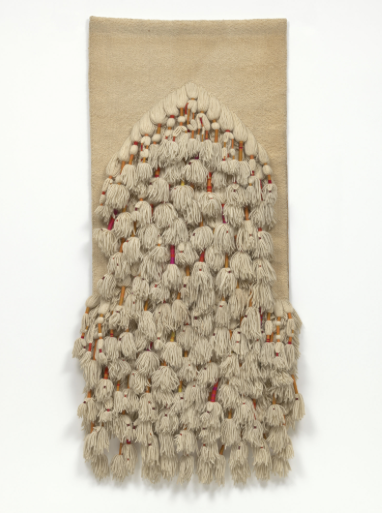
Sheila Hicks, Prayer Rug, Hand-spun wool, 87 × 43″ (221
× 109.2 cm), 1965, The Museum of Modern Art, New York. Gift of Dr. Mittelsten Schied, 1966
But that’s not all. You still have four days to see the acclaimed MOMA exhibition, Making Space: Women Artists and Postwar Abstraction which includes 100 works that “range from the boldly gestural canvases of Lee Krasner, Helen Frankenthaler, and Joan Mitchell; the radical geometries by Lygia Clark, Lygia Pape, and Gego; and the reductive abstractions of Agnes Martin, Anne Truitt, and Jo Baer; to the fiber weavings of Magdalena Abakanowicz, Sheila Hicks, and Lenore Tawney; and the process-oriented sculptures of Lee Bontecou, Louise Bourgeois, and Eva Hesse. The exhibition will also feature many little-known treasures such as collages by Anne Ryan, photographs by Gertrudes Altschul, and recent acquisitions on view for the first time at MoMA by Ruth Asawa, Carol Rama, and Alma Woodsey Thomas.” Again, you can become well-informed before your visit (or visit online in lieu of inperson) with online resources, YouTube presentations, one when the exhibition opened and another, a tour of the exhibition with a MOMA curator.
Beginning on September 13th, the ICA, University of Pennsylvania in Philadelphia, will present Nathalie Du Pasquier: BIG OBJECTS NOT ALWAYS SILENT, a retrospective exploring the prolific creative practice of artist and designer Nathalie Du Pasquier on view from September 13 through December 23, 2017. A founding member of the Italian design collective Memphis, Du Pasquier’s work across painting, sculpture, drawing, installation and design demonstrates a unique and considered interpretation of space and objects. A catalog will accompany the exhibition. A collection of graphic and whimsical textile designs by Nathalie Du Pasquier and George Sowden has been released by 4 Spaces and Zigzag Zurich.
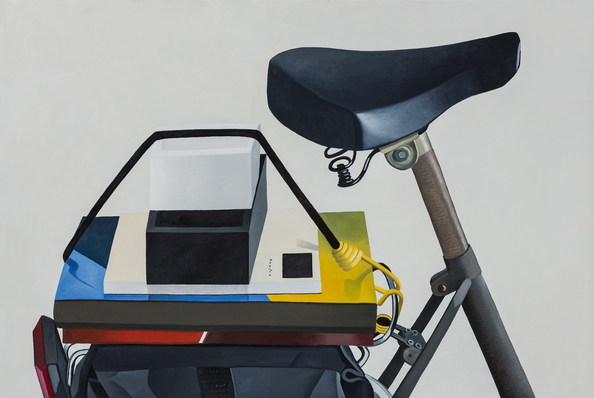
Nathalie Du Pasquier, Still life on my bicycle, oil on canvas, 39 x 59 inches, 2005. Courtesy of Kunsthalle Wien and the Institute of Contemporary Art at the University of Pennsylvania
Must these artists be categorized as “women artists”? That’s just one of the questions that Hampton’s artist, Toni Ross hopes to explore ina series of conversations at LongHouse Reserve in East Hampton, New York. “In my mind this is a complex issue,” she writes. “I do believe that there are forces that confront all non-white male artists and that that conversation is evolving and changing rapidly. The Hamptons, with its rich history of artists includes many important women who broke ground for us, many whom may have been overshadowed by their more recognized partners. I look forward to the conversations in all of their complexities.” The conversations, in WOMEN ARTISTS: Reshaping the Conversation, A series of panel discussions in the LongHouse Garden will unfold in three events, beginning this Saturday:



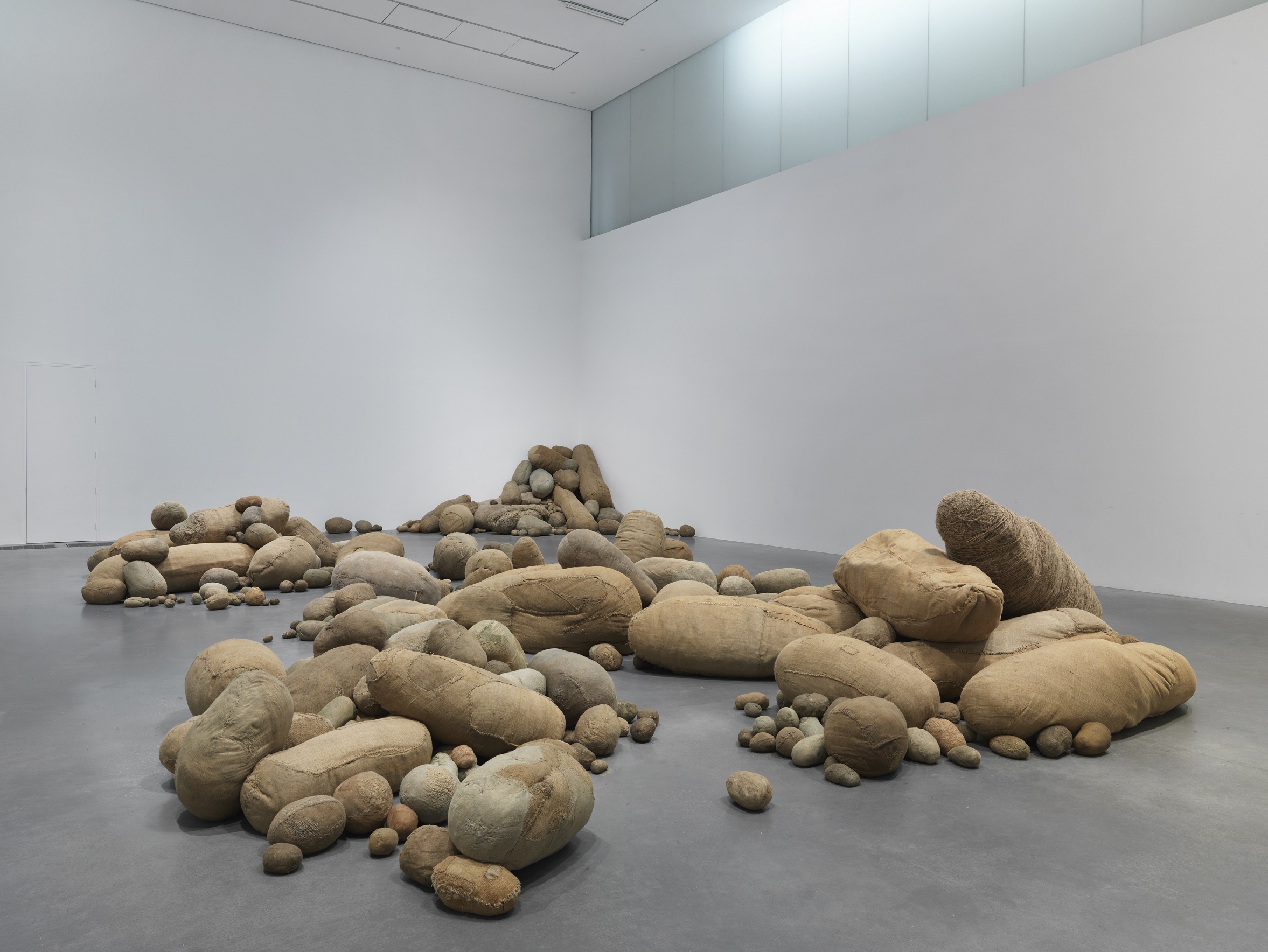

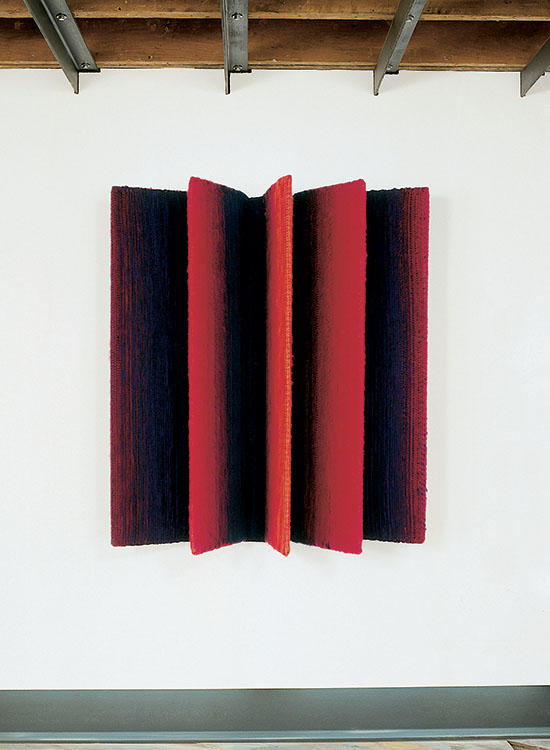
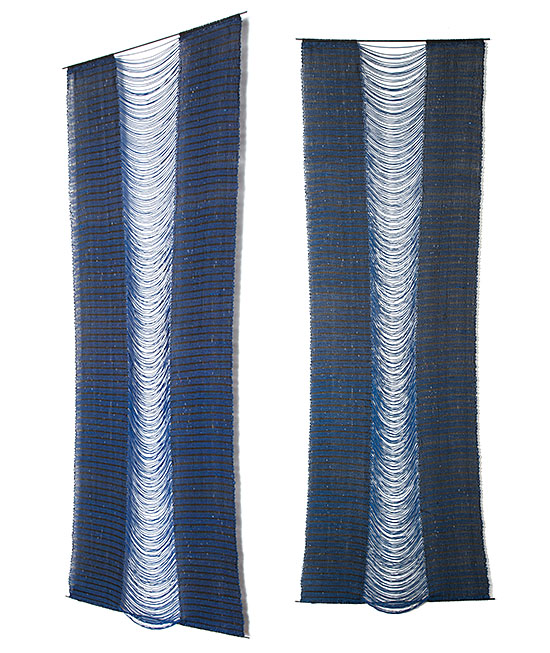

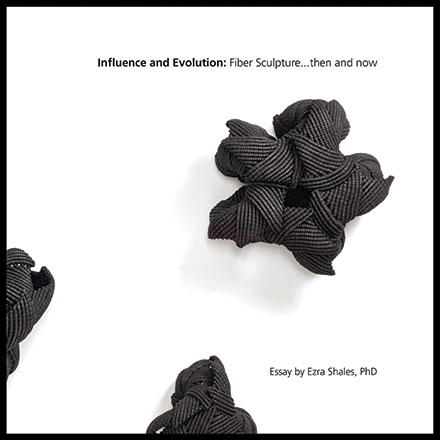

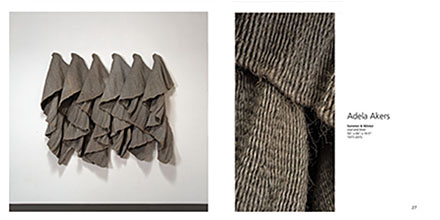
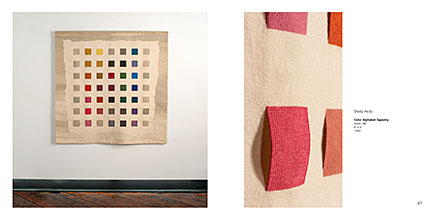
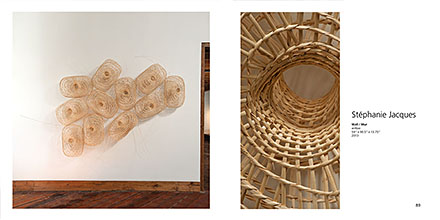


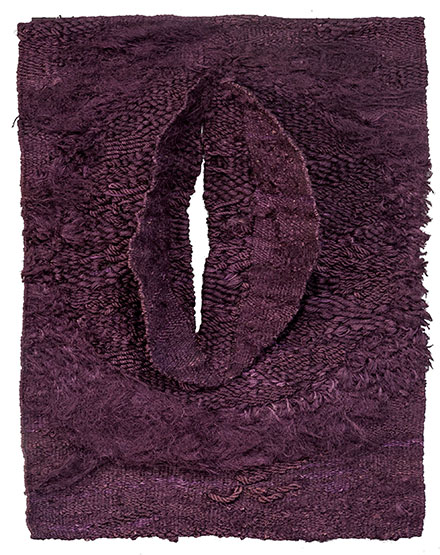
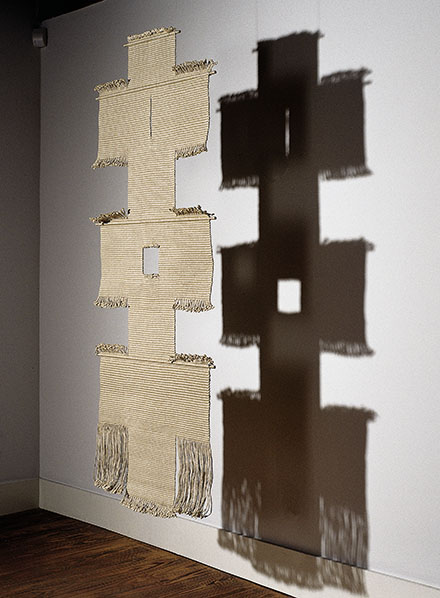

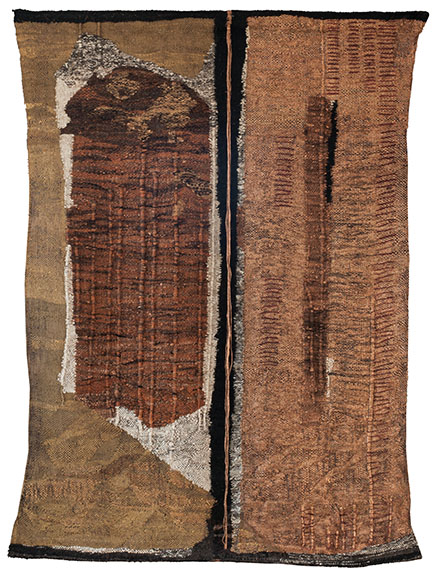


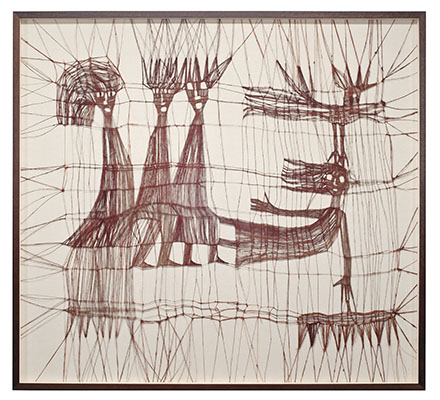

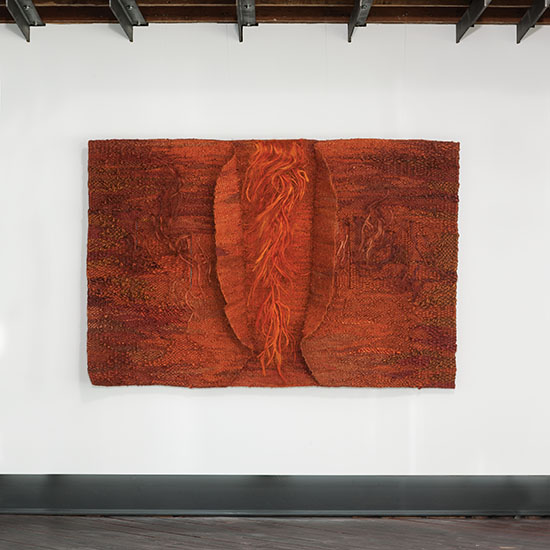
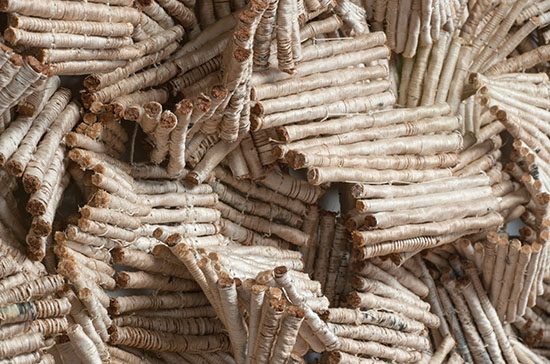
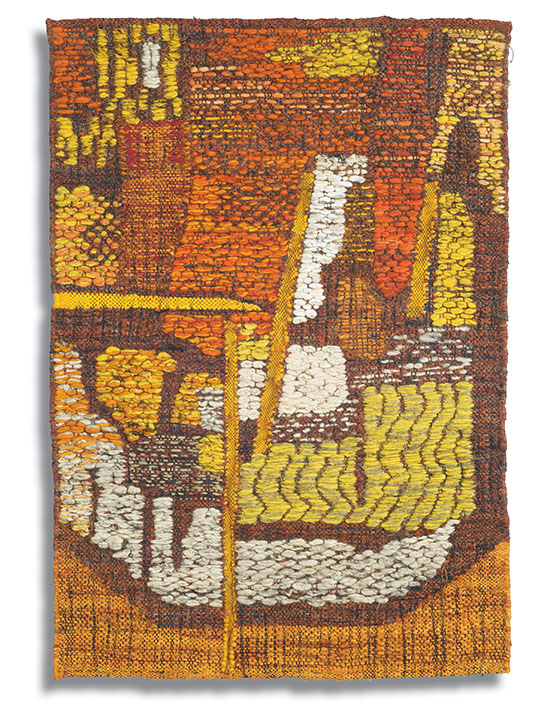
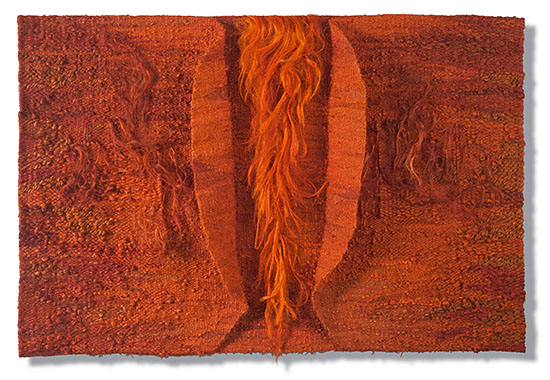
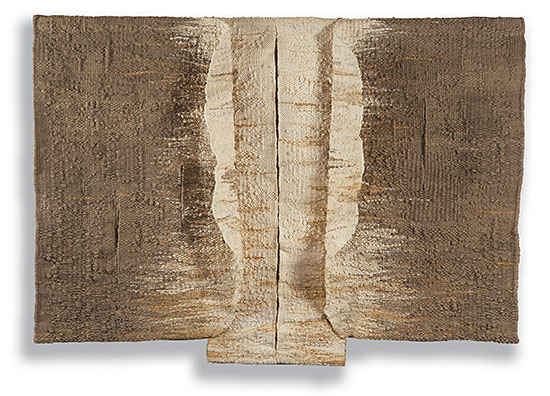



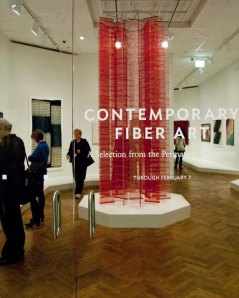


The Resurgence of Interest in Fiber Sculpture and Art Textiles Will Continue in 2015
Last year was an extraordinary one for those of us who appreciate contemporary art fiber and art textiles. More than 10 exhibitions opened in the US and abroad. In October, the art newspaper reported that “textiles are gaining international stature in art museums” and further that “[c]ommercial interest is on the rise,” quoting art advisor Emily Tsingou: “Textile [art] has entered the mainstream.” Soft Fabrics-Have Solid Appeal. Below is a roundup of exhibitions and reviews from last year and a guide to what to expect in 2015.
Mainstream attention began with the coverage of Sheila Hicks‘ inclusion
Sheila Hicks, Pillar of Inquiry/Supple Column, 2013-14 (installation view, Whitney Museum of American Art, New York). Photograph by Bill Orcutt
in the Whitney Biennial in March and was followed by coverage of the restoration of her remarkable 1960s tapestries at the Ford Foundation in New York Sheila Hicks Tapestries to Again Hang at Ford Foundation. In June, the Art Institute of Chicago’s textile galleries reopened, featuring 96-year-old Ethel Stein’s work, in Ethel Stein, Master Weaver.
September saw three fiber-related exhibitions; the Museum of Arts and Design opened What Would Mrs. Webb Do? A Founder’s Vision (closes
February 8, 2015),Kay Sekimachi, Ed Rossbach, Françoise Grossen, Katherine Westphal and others Museum of Art Design installation of What Would Mrs Webb Do?, Photo by Tom grotta
February 8, 2015), which featured significant textiles from the permanent collection by Anni Albers, Kay Sekimachi, Katherine Westphal, Ed Rossbach, Françoise Grossen and Trude Guermonprez, while The Drawing Center’s: Thread-Lines offered Anne Wilson creating fiber art in situ
Ann Wilson’s In Situ Performance at the Drawing Center, photo by Tom Grotta
together with a collection of works by Lenore Tawney, Louise Bourgeois and others. Contemporary 108 in Tulsa, Oklahoma, featured a series of large photographic weavings by Aleksandra Stoyanov of the Ukraine
Contemporary 108 in Tulsa, Oklahoma, curated from the 2013 “Aleksandra Stoyanov” Tefen Open Museum, Israel exhibition. photo copyright Tefen Open Museum
and now Israel, described as “warp and weft paintings.”
In October, Fiber: Sculpture 1960 – present, opened at the Institute of Contemporary Art in Boston with works by 34 artists including
Fiber: Sculpture 1960 — present opening, photo by Tom Grotta
Magdalena Abakanowicz, Ritzi Jacobi and Naomi Kobayashi. The Boston Globe called the exhibition “[s]plendid, viscerally engaging…groundbreaking;” the exhibition catalog (available at browngrotta.com) was pronounced by Blouin art info, “an amazing resource for anyone interested in learning more about the medium.” Art Info – Art in the Air Fiber Sculpture 1960 Present October also saw a survey of the work of sculptor and poet, Richard Tuttle, at the Tate in London, Richard Tuttle:
I Don’t Know, Or The Weave of Textile Language in which Tuttle investigated the importance of textiles throughout history, across his remarkable body of work and into the latest developments in his practice. Tate Modern – Richard Tuttle I Don’t Know or Weave Textile Language
Throughout the year, Innovators and Legends, with work by 50 fiber
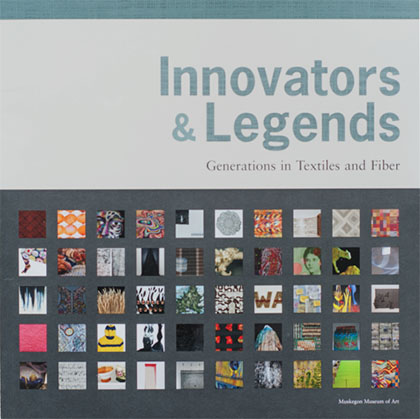
artists, including Adela Akers, Nick Cave, Katherine Westphal and Sherri Smith toured the US, exhibiting at museums in Colorado, Iowa and Kentucky. The fiber fanfest culminated at Art Basel in Miami Beach in December, where Blouin’s Art Info identified a full complement of fiber works and textiles in its listing, “Definitive Top 11 Booths, “ including Alexandra da Cunha’s compositions of mass-produced beach towels and various colored fabrics at Thomas Dane Gallery, a Rosemarie Trockel embroidered work at Galerie 1900-2000, marble and dyed-fabric pieces by Sam Moyer at Galerie Rodolphe Janssen and woven paintings by Brent Wadden at Mitchell-Innes & Nash Blouin Art info – The Definitive Top-11 Booths at Art Basel Miami Beach.
And what’s ahead in 2015?
More auctions and exhibitions that include fiber sculpture and art textiles are scheduled for 2015. Fiber: Sculpture 1960 – present will
open at the Wexner Center for the Arts, Columbus, Ohio on February 7th and travel to the Des Moines Art Center, Iowa in May.
Sonia Delaunay Prismes electriques 1914 Centre Pompidou Collection, Mnam / Cci, Paris © Pracusa 2013057
dedicated her life to experimenting with color and abstraction, bringing her ideas off the canvas and into the world through tapestry, textiles, mosaic and fashion.
Also in April, the Museum of Arts and Design will host Pathmakers:
Lenore Tawney in her Coenties Slip studio, New York, 1958.
Courtesy of Lenore G. Tawney Foundation; Photo by David Attie
Women in Art, Craft and Design, Midcentury and Today, featuring work by Sheila Hicks, Lenore Tawney and Dorothy Liebes http://madmuseum.org/exhibition/pathmakers.
In June, the Toms Pauli Foundation in Lausanne, Switzerland will celebrate the International Tapestry Biennials held there from 1962 to 1995 and display work by the Polish textile artist and sculptor Magdalena Abakanowicz, in an exhibition entitled, Objective Station.
1995 and display work by the Polish textile artist and sculptor Magdalena Abakanowicz, in an exhibition entitled, Objective Station.
Also this summer, the Musée d’Art Contemporain de Baie St Paul in
Mariette Rousseau Vermette Portrait by Tom Grotta
Quebec, Canada will examine the work of Mariette Rousseau-Vermette, who participated in five of the Lausanne Biennials.
From April 24 – May 3, 2015, browngrotta arts will host Influence and Evolution, Fiber Sculpture then and now at our barn/home/gallery space in Wilton, Connecticut. In its 27-year history, browngrotta arts
Françoise Grossen, From the Mermaid Series IV, 1983, photo by Tom Grotta
including Magdalena Abakanowicz, Lia Cook, Kay Sekimachi and Françoise Grossen, with works from a later generation of artists, all born after 1960, through whom fiber sculpture continues to evolve. These artists, including María Eugenia Dávila and Eduardo Portillo of Venezuela, Stéphanie Jacques of Belgium and Naoko Serino of Japan, work in a time when classification of medium and material presents less of a constraint and fiber and fiber techniques can be more readily explored for their expressive potential alone.
“It is rare to find so many inventive, compelling works in one show, and it astounds that many are so little known,” wrote Kirsten Swenson in Art in America, about Fiber: Sculpture 1960 – present, in October 2014. Art in America Magazine – reviews: Fiber Sculpture 1960-present. This spring, in Influence and Evolution, browngrotta arts will offer dozens more significant works of fiber art for collectors to appreciate and new audiences to discover — more than two dozen works by fiber pioneers and another 30 more recent fiber explorations. We hope you will visit the exhibition, order the catalog or both. Please contact us for more information about what’s in store. art@browngrotta.com